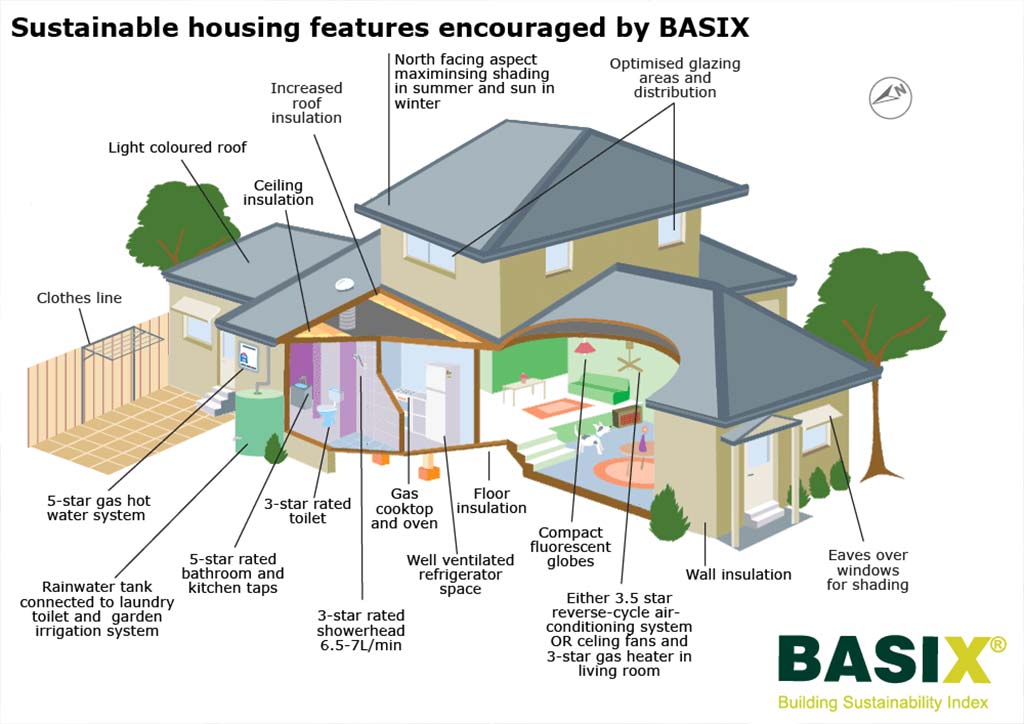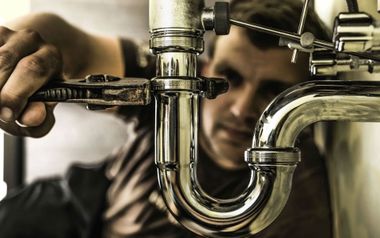A Comprehensive Guide to Your House's Plumbing System Anatomy
A Comprehensive Guide to Your House's Plumbing System Anatomy
Blog Article
We've noticed this post involving Anatomy of a House: Understanding the Components below on the net and concluded it made perfect sense to relate it with you on this site.

Understanding exactly how your home's pipes system functions is crucial for every property owner. From delivering clean water for drinking, cooking, and bathing to securely getting rid of wastewater, a properly maintained pipes system is crucial for your family members's health and comfort. In this comprehensive guide, we'll explore the intricate network that makes up your home's plumbing and offer tips on maintenance, upgrades, and dealing with common issues.
Introduction
Your home's plumbing system is more than just a network of pipes; it's a complex system that ensures you have access to clean water and reliable wastewater elimination. Recognizing its parts and just how they interact can aid you protect against pricey repair services and make certain every little thing runs efficiently.
Fundamental Parts of a Plumbing System
Pipes and Tubing
At the heart of your pipes system are the pipes and tubing that carry water throughout your home. These can be made of numerous products such as copper, PVC, or PEX, each with its benefits in regards to sturdiness and cost-effectiveness.
Fixtures: Sinks, Toilets, Showers, etc.
Fixtures like sinks, commodes, showers, and bath tubs are where water is utilized in your home. Understanding how these components link to the plumbing system aids in detecting troubles and intending upgrades.
Shutoffs and Shut-off Factors
Shutoffs manage the flow of water in your plumbing system. Shut-off valves are essential during emergencies or when you need to make repairs, allowing you to separate parts of the system without interfering with water circulation to the whole home.
Supply Of Water System
Main Water Line
The main water line attaches your home to the metropolitan supply of water or a private well. It's where water enters your home and is distributed to numerous components.
Water Meter and Stress Regulator
The water meter steps your water usage, while a pressure regulatory authority makes certain that water streams at a risk-free pressure throughout your home's plumbing system, protecting against damages to pipes and fixtures.
Cold Water vs. Warm water Lines
Recognizing the distinction in between cold water lines, which provide water directly from the main, and warm water lines, which bring heated water from the water heater, aids in fixing and preparing for upgrades.
Water drainage System
Drain Pipes and Traps
Drain pipelines bring wastewater away from sinks, showers, and toilets to the sewage system or sewage-disposal tank. Traps protect against sewage system gases from entering your home and likewise trap particles that might cause blockages.
Ventilation Pipelines
Ventilation pipes permit air into the drainage system, protecting against suction that might slow water drainage and trigger catches to empty. Correct air flow is important for keeping the stability of your plumbing system.
Value of Proper Water Drainage
Ensuring appropriate water drainage avoids back-ups and water damage. Frequently cleaning up drains pipes and preserving catches can avoid expensive repairs and prolong the life of your pipes system.
Water Heating System
Types of Hot Water Heater
Hot water heater can be tankless or conventional tank-style. Tankless heating units warmth water on demand, while storage tanks keep warmed water for immediate use.
Updating Your Plumbing System
Factors for Updating
Upgrading to water-efficient fixtures or changing old pipes can enhance water quality, minimize water costs, and increase the worth of your home.
Modern Pipes Technologies and Their Benefits
Check out modern technologies like clever leak detectors, water-saving toilets, and energy-efficient water heaters that can conserve cash and lower environmental impact.
Expense Factors To Consider and ROI
Compute the ahead of time costs versus lasting cost savings when thinking about pipes upgrades. Many upgrades pay for themselves via reduced utility expenses and less repairs.
Exactly How Water Heaters Attach to the Pipes System
Understanding exactly how hot water heater attach to both the cold water supply and hot water distribution lines assists in detecting issues like insufficient hot water or leakages.
Upkeep Tips for Water Heaters
On a regular basis purging your water heater to remove sediment, inspecting the temperature level setups, and inspecting for leaks can prolong its life expectancy and boost power effectiveness.
Usual Plumbing Problems
Leaks and Their Reasons
Leakages can take place as a result of maturing pipes, loose fittings, or high water pressure. Dealing with leakages immediately protects against water damages and mold and mildew development.
Blockages and Obstructions
Clogs in drains and commodes are commonly triggered by flushing non-flushable items or a buildup of oil and hair. Utilizing drain screens and being mindful of what drops your drains pipes can avoid clogs.
Signs of Pipes Issues to Look For
Low water stress, slow-moving drains, foul odors, or unusually high water costs are indicators of prospective plumbing problems that need to be attended to quickly.
Plumbing Upkeep Tips
Routine Inspections and Checks
Set up yearly plumbing examinations to capture issues early. Look for indicators of leaks, corrosion, or mineral accumulation in faucets and showerheads.
Do It Yourself Upkeep Tasks
Simple jobs like cleaning faucet aerators, looking for toilet leakages utilizing dye tablet computers, or protecting revealed pipelines in cold environments can avoid significant plumbing issues.
When to Call an Expert Plumbing
Know when a pipes issue calls for professional experience. Trying complex repair services without proper expertise can lead to even more damage and greater repair service costs.
Tips for Minimizing Water Use
Basic habits like taking care of leakages quickly, taking much shorter showers, and running full lots of laundry and meals can preserve water and lower your energy bills.
Eco-Friendly Pipes Options
Consider sustainable pipes materials like bamboo for floor covering, which is durable and eco-friendly, or recycled glass for counter tops.
Emergency situation Readiness
Steps to Take Throughout a Pipes Emergency
Know where your shut-off shutoffs lie and how to shut off the water in case of a burst pipe or significant leak.
Significance of Having Emergency Situation Contacts Useful
Keep get in touch with details for local plumbing technicians or emergency solutions conveniently available for quick action throughout a plumbing dilemma.
Ecological Influence and Conservation
Water-Saving Fixtures and Home Appliances
Mounting low-flow taps, showerheads, and toilets can considerably minimize water use without sacrificing performance.
DIY Emergency Situation Fixes (When Relevant).
Temporary fixes like utilizing air duct tape to spot a leaking pipe or placing a container under a leaking tap can decrease damages until a professional plumbing arrives.
Conclusion.
Understanding the anatomy of your home's plumbing system equips you to preserve it successfully, conserving money and time on fixings. By complying with routine maintenance routines and staying notified regarding contemporary pipes innovations, you can guarantee your pipes system runs effectively for many years to find.
The Anatomy of Your Home s Plumbing System
Understanding the anatomy of your home s plumbing system is essential for any homeowner. It not only helps in identifying potential issues but also facilitates effective communication with professionals when repairs or upgrades are needed. Your home s plumbing system is more than just pipes and faucets; it s a complex network that ensures the efficient and hygienic flow of water in and out of your house. In this blog, we ll dissect the crucial components of your home s plumbing system. For those in Antelope Valley, Brock Plumbing is your trusted partner for all your plumbing needs, ensuring your system functions smoothly and efficiently.
Water Supply System
Main Water Line: This is where your home s plumbing system begins. The main water line connects your home to the public water supply or a private well. Pipes and Shut-off Valves: Pipes distribute water throughout your home. Shut-off valves are crucial for controlling the flow of water and making repairs without shutting off the entire system. Drainage System
Drain Pipes: These pipes carry waste and water away from sinks, toilets, and showers. Vents: Vents allow sewer gases to escape and help maintain proper pressure in the drainage pipes, ensuring efficient flow of wastewater. Traps: Every fixture has a trap, a U-shaped pipe that holds water and prevents sewer gases from entering your home. The most common is the P-trap under sinks. Fixtures and Appliances
Fixtures and appliances are the most interacted with parts of your plumbing system. They include sinks, toilets, showers, dishwashers, and washing machines. Each fixture and appliance has its own supply and drainage connection, ensuring they receive clean water and can dispose of wastewater effectively.
Water Heating System
Your water heater is a crucial component, providing hot water to various fixtures and appliances in your home. It can be tank-based or tankless, with each type having its own set of advantages and maintenance requirements. Regular maintenance is essential to ensure efficient operation and extend the lifespan of the unit.
Sump Pump
In areas prone to flooding or with high water tables, a sump pump is an essential part of the plumbing system. It s installed in the lowest part of your basement or crawlspace and pumps out water that accumulates, preventing flooding and protecting your home from water damage.
Septic System
Homes that are not connected to a municipal sewer system have a septic system and an underground wastewater treatment structure. Understanding how to maintain your septic system is crucial to prevent backups, odors, and early system failure.
Conclusion
Your home s plumbing system is a complex and essential network, ensuring the efficient and hygienic flow of water in and out of your property. Understanding its key components helps in maintaining it properly and identifying issues before they escalate into major problems. For residents in Antelope Valley, Brock Plumbing is dedicated to providing top-notch services, ensuring that every part of your plumbing system is in perfect working order. Trust our team of professionals to handle all your plumbing needs, ensuring your home remains comfortable, safe, and well-maintained.
https://brockplumbinganddrains.com/blog/the-anatomy-of-your-homes-plumbing-system/

I ran across that piece of writing on Plumbing Installation 101: All You Need to Know when doing a lookup on the internet. Don't hesitate to take a moment to share this blog if you enjoyed reading it. Bless you for being here. Come back soon.
Book An Estimate Now Report this page